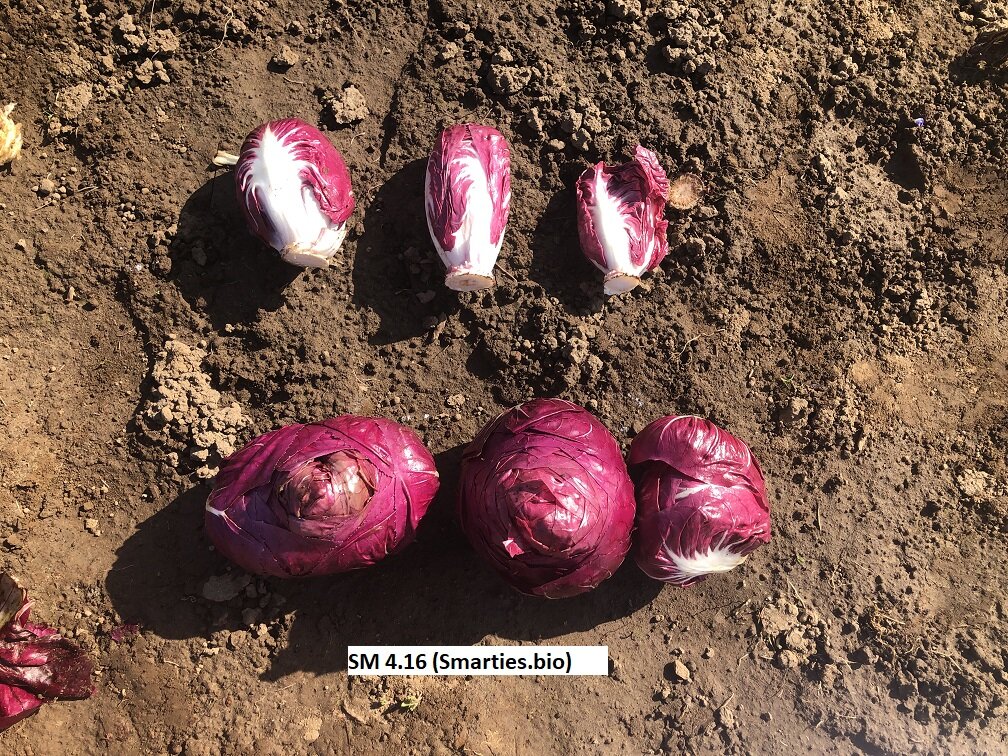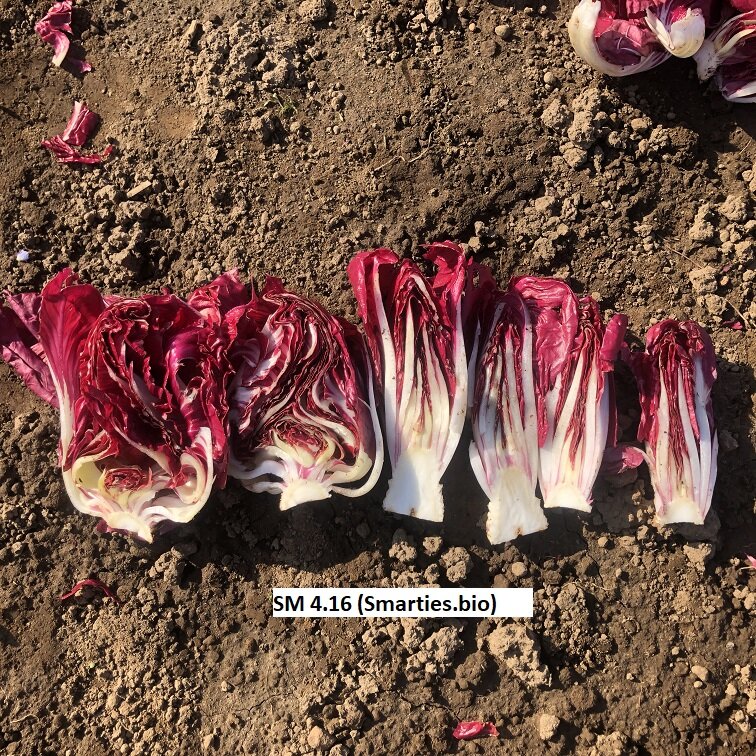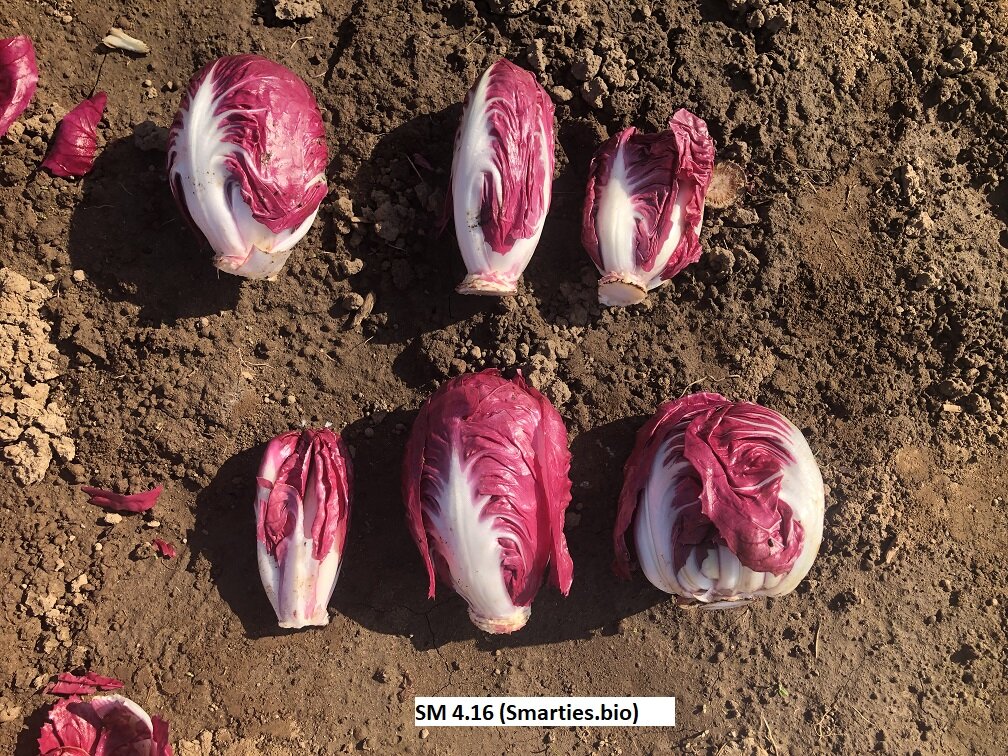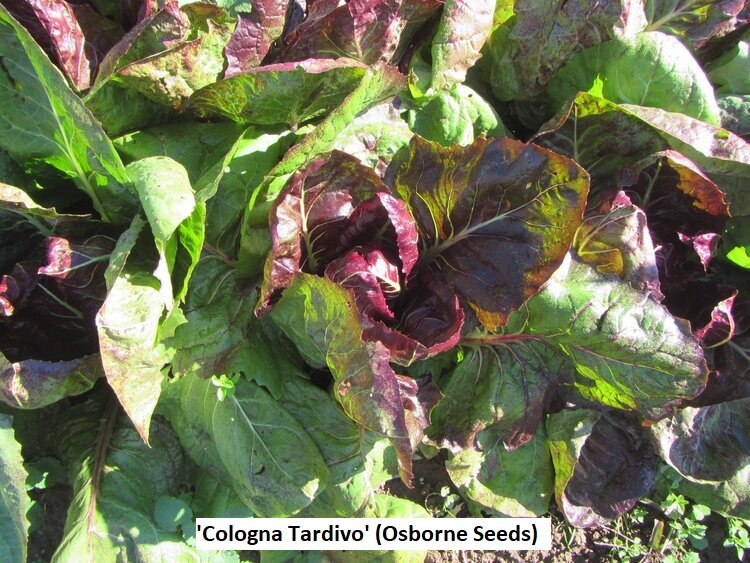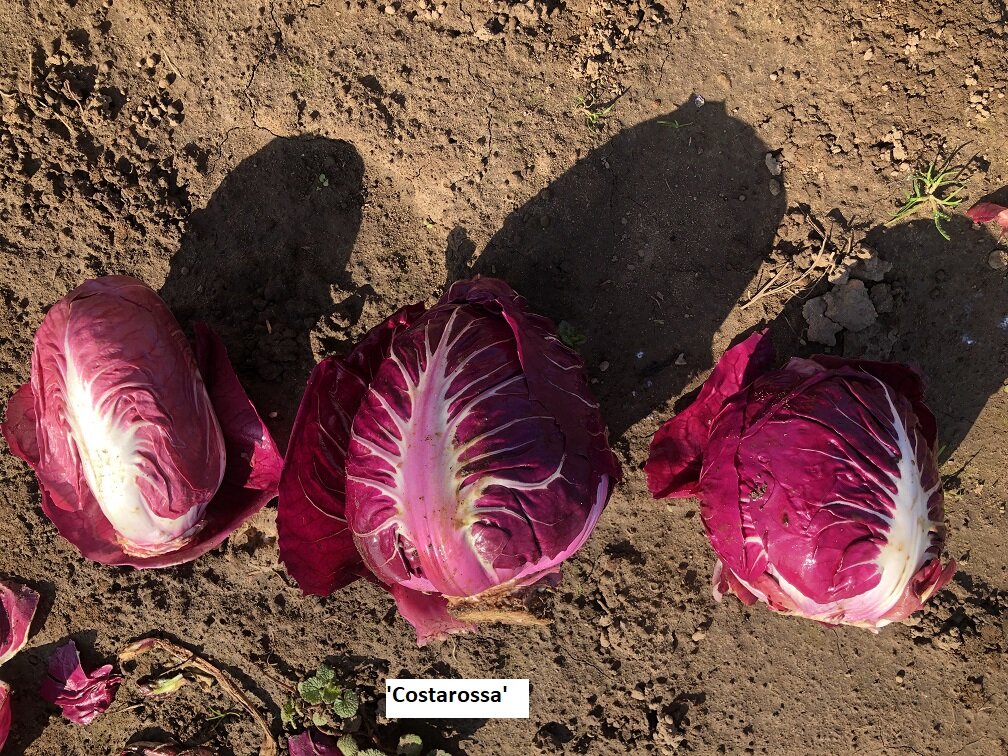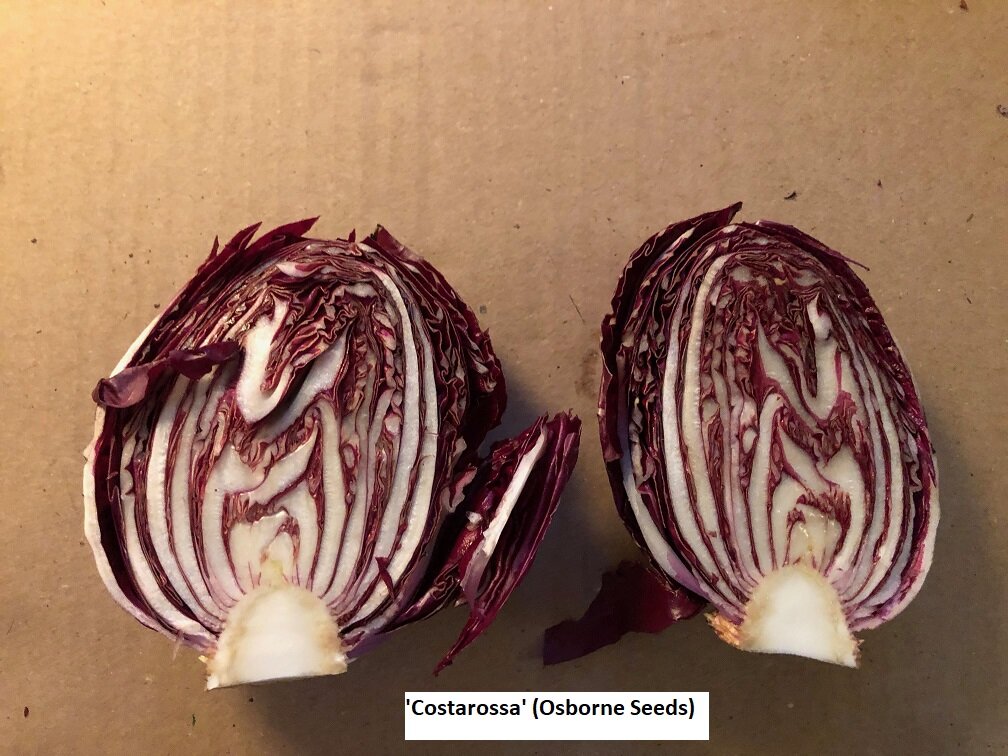Rosso di Verona Radicchio
Rosso di Verona, as a distinct cultivar, is believed to have emerged in the mid- to late-18th century in the farming areas around the city of Verona. Improved breeding techniques in the late-18th and early-19th centuries helped shape the variety to become what it is today, and there is evidence that farmers first started bringing it market by the early 19th century. As with most varieties of radicchio that were grown back then, Rosso di Verona were grown out during the summer, harvested with their roots on, and stored in root cellars for forcing through the winter. Amazingly, when farmers forced Rosso di Verona, they buried their stored plants in holes dug into composting manure piles. The heat from the composting manure triggered the plants to put on new growth, and the darkness accentuated the red color of the leaves and whitened the mid-rib.
Rosso di Verona could be described as the ‘cutest’ of all the varieties of radicchio. Shaped like a squashed football, heads of Rosso di Verona are a deep crimson-red, with a thick, crunchy white mid-rib. The leaves are a somewhat triangular and cup shaped, perfect for filling with a delicious spread. Rosso di Verona radicchio are on the more bitter end of the bitterness spectrum, though as with all radicchio, they get sweeter as the weather gets colder in late-fall and early-winter.
When to Find: December-March
Varieties: SM 4.16, Cologna Tardivo, Costarossa

